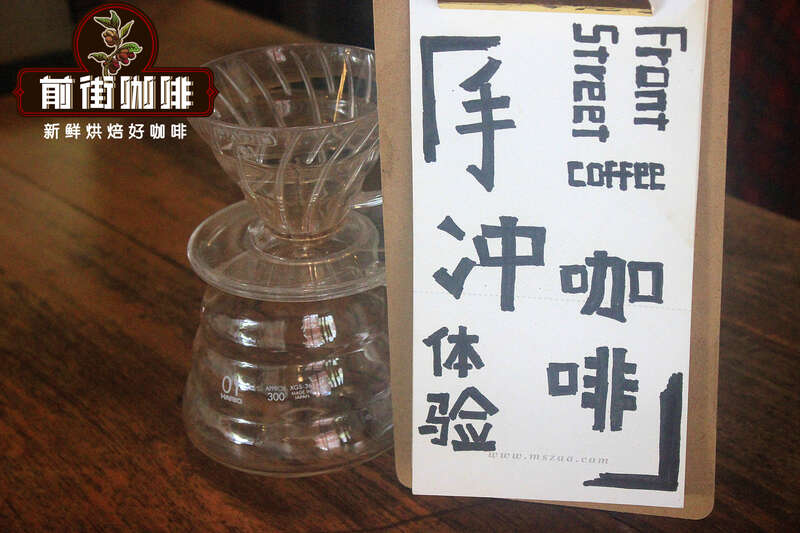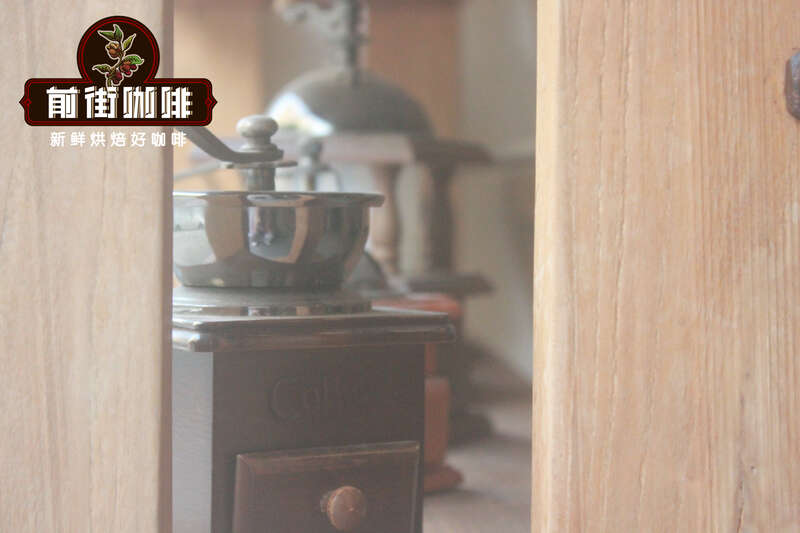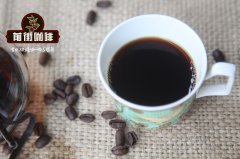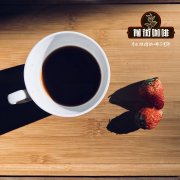Arabica coffee beans must be great? Introduction of appearance and flavor characteristics of Arabica coffee beans

Professional coffee knowledge exchange more coffee bean information please follow the coffee workshop (Wechat official account cafe_style)
Coffee fans all know that there are different varieties of beans in different countries, some of which are iron pickup, bourbon, and some are Kaddura, Kaduai, and iron pickup, so coffee fans often ask what these varieties are in Qianjie, and what is the difference in flavor? In fact, all the varieties mentioned just now belong to Arabica species, so the next article in Qianjie will talk about what Arabica coffee beans are.
Arabica coffee beans
In fact, in today's coffee market, there are a total of three major coffee varieties, including Arabica, Robusta and Liberika, among which Arabica coffee beans are the most widely used in the hand-brewed coffee market. Almost all the coffee beans in Qianjie are Arabica, because his quality is the best of the three coffee varieties, and the Robusta variety is due to high caffeine. So they are all used to produce instant coffee, which are the two most common coffee varieties on the market today, while Liberika coffee seldom appears on the market because its output is very small and its flavor is bitter, so it is not suitable for commercial coffee, so it is hardly sold on the market.

According to Qianjie, Arabica is the earliest species found in the world. It was found in Ethiopia, but it was only widely cultivated in Yemen and exported to the world at the port of Moka in Yemen. At that time, Yemen was called the Arab world, so coffee was thought by Europeans to come from the Arab world, and coffee beans were called Arabica beans, which evolved into today's name.
As the former street article said, Arabica is one of the best quality coffee varieties, so it is now widely grown as an economic crop in major coffee-producing countries. At the same time, Arabica accounts for 75% of the world's coffee beans.
As far as Qianjie knows, Arabica coffee is very resistant to low temperature, but coffee beans cannot frost, otherwise they will freeze to death and their drought capacity is not strong, so they have to be planted on a plateau of 1000-2600m. At the same time, Arabica has many subspecies, that is, tin card, bourbon, Kaddura and other varieties mentioned in Qianjie above. Among them, Ironka and Bourbon are the two oldest varieties under the Arabica branch, so let's talk about these common varieties derived from Arabiya in Qianjie.
Iron pickup
According to Qianjie, iron pickup is the oldest variety in the Arabica branch, and it is also the oldest native variety in Ethiopia. Almost all the coffee varieties that Arabica belongs to now are derived from iron pickups. Iron pickup has an elegant flavor, but its physique is weak, its disease resistance is low, and it is easy to be infected with leaf rust. Therefore, the output of coffee beans is low, and there is no way to achieve economic benefits. In recent years, iron cards in Central and South America have been gradually replaced by Kaddura and Kaduai. So the figure of the iron pickup is becoming more and more rare. Although the flavor of the iron pickup is elegant, it is not as popular as bourbon.
Among them, the most famous blue mountain coffee variety in the world is also tin card, while Qianjie also has a coffee plantation in Yunnan, which mainly grows tin card coffee trees. This also shows that the coffee tree planted by Ironhide Card is not easy to grow, but its flavor is still attractive, which is enough to witness its excellence.
Front street coffee Jamaica Blue Mountain Coffee beans
Country: Jamaica
Producing area: blue Mountain
Altitude: 1310m
Variety: iron pickup
Treatment: insolation
Flavor: berries, black cocoa, cream, nuts, brown sugar
Bourbon
Bourbon is a secondary species of the iron pickup mutation, which is found on the island of Bourbon, so it is called bourbon coffee. It belongs to the oldest coffee variety in existence, and the green fruit appears bright red when it ripens. Compared with the tin card species, the bourbon species has wider leaves and denser growth. although the seed setting is higher than the tin card, the harvest time is also 2 years, which is also a variety with less yield, but it has a high-quality taste, like the sour taste of red wine, and the aftertaste is sweet.
The Brazilian coffee beans in the front street best represent the excellence of bourbon varieties, such as Brazilian red fruit coffee beans.
Qianjie Brazilian red fruit coffee beans
Country: Brazil
Producing area: South Minas
Altitude: 700-1200
Variety: red bourbon
Treatment: semi-washing
Flavor: tropical fruit aroma, high sweetness
Kaddura
Kaddura, a single gene variant of bourbon, was found in Brazil in 1937. It has better production capacity and disease resistance than bourbon, and the tree is shorter and easy to harvest. Unfortunately, like bourbon, it has the periodic problem of production capacity fluctuation every two years. But its flavor is comparable to or slightly worse than bourbon beans, more importantly, it is super adaptable, it does not need shade trees, and it can also be vibrant in direct exposure to the sun. it is commonly known as exposure coffee, which can adapt to high-density planting, but it must be fertilized more and increase the cost. therefore, the acceptance of coffee farmers is not high in the initial stage.
Among them, the representative coffee beans on the front street are Costa Rican Tarazu coffee beans.
Front Street Coffee Costa Rica Tarazu Coffee beans
Country: Costa Rica
Producing area: Tarazhu
Altitude: 1950m
Variety: Kaddura
Treatment: washing
Flavor: orange, nut, honey
Kaduai
Kaduai is a hybrid of Arabica and Kaddura (New World). It has a good ability to resist natural disasters, especially wind and rain. It inherits the advantages of Kaddura's low stature and changes Mondonwood's shortcomings. Another advantage is that the result is solid, and it is not easy to fall off when the strong wind blows, which makes up for the weakness of Arabica fruit, but the overall flavor is more monotonous than Kaddura, monotonous and less mellow, which is the greatest pity. In addition, the fruit growth and harvest life is only about ten years, and the short life span is also one of the weaknesses.
Among them, the representative coffee beans in front street are Costa Rican Beethoven coffee beans.
Front street coffee Costa Rica Beethoven coffee beans
Country: Costa Rica
Producing area: Tara Zhu producing area (Carnett Manor)
Altitude: 1900m
Variety: Kaduai
Treatment method: washing treatment method
Flavor: light fermented wine with citrus and berry floral aromas
The above is the relevant information about Arabica beans sorted out in Qianjie, hoping to help coffee fans understand what Arabica coffee beans are, so as to select coffee beans that suit their taste.
For more boutique coffee beans, please add private Qianjie coffee on Wechat. WeChat account: kaixinguoguo0925
Important Notice :
前街咖啡 FrontStreet Coffee has moved to new addredd:
FrontStreet Coffee Address: 315,Donghua East Road,GuangZhou
Tel:020 38364473
- Prev

What's the difference between trickling and hand-brewing coffee? How does drip filter coffee make high quality?
Professional coffee knowledge exchange more coffee bean information Please pay attention to the coffee workshop (Wechat official account cafe_style) currently the most common method of brewing coffee is hand brewed coffee, of course, in addition to hand brewing coffee, the use of American coffee machine (drip filter coffee machine) coffee, also known as drip filter coffee. What's the difference between trickling and hand-brewing coffee? In a word:
- Next

What Arabica coffee beans does Starbucks use? How is it different from Robusta?
Professional coffee knowledge exchange more coffee bean information please follow the coffee workshop (Wechat official account cafe_style) what are Coffee Arabica coffee beans? How is it different from Coffee Robusta? There are many varieties of coffee trees, among which Arabica and Robusta are the main ones that can be used for drinking and circulating on the market.
Related
- Beginners will see the "Coffee pull flower" guide!
- What is the difference between ice blog purified milk and ordinary milk coffee?
- Why is the Philippines the largest producer of crops in Liberia?
- For coffee extraction, should the fine powder be retained?
- How does extracted espresso fill pressed powder? How much strength does it take to press the powder?
- How to make jasmine cold extract coffee? Is the jasmine + latte good?
- Will this little toy really make the coffee taste better? How does Lily Drip affect coffee extraction?
- Will the action of slapping the filter cup also affect coffee extraction?
- What's the difference between powder-to-water ratio and powder-to-liquid ratio?
- What is the Ethiopian local species? What does it have to do with Heirloom native species?

